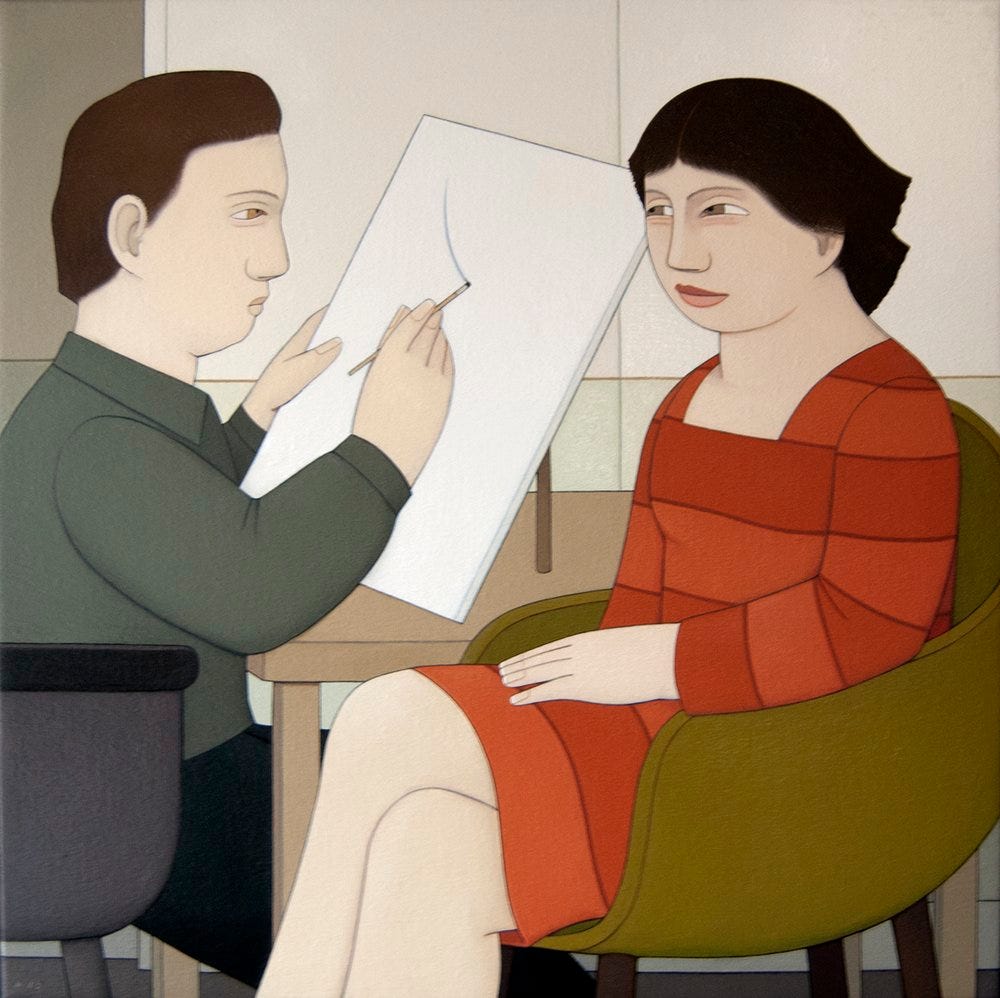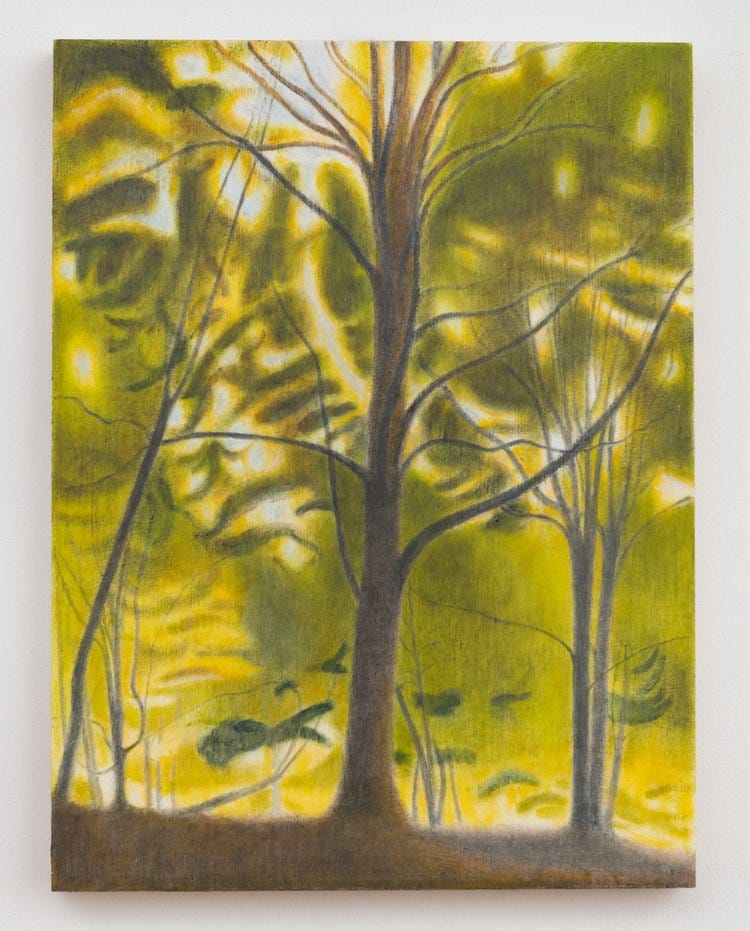Items of Interest, Guided by Beauty Edition
"The micromanagement of language and the misconception of life as a competition for recognition are not conducive to the creative process."

Alyssa Quint, The Lost Encyclopedia of Jewish Artists. “Schneid had written a book about an extraordinary cultural phenomenon that was not only destroyed, but one that was also undergoing a kind of erasure by postwar cultural producers and even its own participants—and this, notwithstanding the existence of a complete manuscript on the topic. Why had a project once greeted with enthusiasm now come to seem so irrelevant?”
Richard Smith, The Corporate Takeover of Copyright. “As the authors put it, copyright may have begun with authors merely seeking to control who can publish their sentences. It has expanded, however, ‘into a tool for the control of almost everything else.’ And that everything else is worth quite a lot of money.”
Nathan Heller, The Battle for Attention. “Years earlier, I had heard of something called the Order of the Third Bird—supposedly a secret international fellowship, going back centuries, of artists, authors, booksellers, professors, and avant-gardists. Participants in the Order would converge, flash-mob style, at museums, stare intensely at a work of art for half an hour, and vanish, their twee-seeming feat of attention complete.”
Bill Toneli, Saul Steinberg’s Beach House. “Steinberg spent almost a year that way, laying low, trying to gather the paperwork he needed to find a new country to call home. In March of 1941, the authorities finally ordered that he be arrested. He turned himself in to police on April 27 and was sent to Milan’s San Vittore prison, a rough and dangerous place, where he was jailed alongside criminals. Steinberg seemed undaunted.”
James Jackson, Analyst or Moralist? “In Wilde’s time, moralistic objections to art usually emerged from the conservative and religious Right. In our own age, artists must contend with demands from the progressive Left that art bend the arc of history towards social justice. Activist critics insist upon purity of language and proportional representation of minority demographics in ways that undermine freedom of thought and expression. But the micromanagement of language and the misconception of life as a competition for recognition are not conducive to the creative process. How can the imagination flourish freely in such a climate?”
Robin Pogrebin, Where Are Young Art Collectors and Museum Donors? “Time was when the tradition of art collecting and museum patronage was reliably passed down through generations. Many museums have young donor committees to develop new supporters. But collecting habits have changed, along with philanthropy patterns. With the largest intergenerational wealth transfer in history underway, the competition for attention and dollars has intensified.”
Sarah Parvini, As D&D booms, ‘Critical Role’ makes its own kind of nerd celebrity. “The show’s popularity has both benefited from and helped fuel the last decade’s resurgence of Dungeons & Dragons, which celebrates its 50th anniversary this year. The game, once a target of ’80s moral panic, is more popular than ever — thanks in part to its prevalence in pop culture through shows like ‘Stranger Things’ and ‘The Big Bang Theory,’ and the 2014 release of the game’s streamlined fifth edition that made the rules more accessible for newcomers. ‘Critical Role’ is often the next stop for the dice-curious, showing them the nuts and bolts of how the game — and its elaborate, years-long stories — actually works.”
Rachel Shalev, The Illustrated Hostage Diary of Moran Stella Yanai. “You know, Noa [Argamani] really loves to draw. She’s an amazing artist. They would bring her paper and paint, and she would paint gorgeous Chinese flowers, and then they would take them away from her. They really loved her paintings. So, when she comes back, you come again and we’ll paint together.”
, Bad Painting, Folk Art and localism. “After all, in the absence of a realistic prospect of securing control of central power, one must oppose it and find routes to cultivate new art of value. The best way to oppose centralised dissemination of cultural material intended to undermine national customs is to encourage a decentralised localism that can sustain itself without central control. And the outcome of that localism would be…. well, what exactly?”Alaric, Aesthetic Violence. “Political power is a game of PR and aesthetics, and with very little actual force involved. The decisive element governing whether it is possible to impose one’s will upon the political opposition in the public square isn’t the direct use of violence, but belief and morale.”
James Simons, My Guiding Principles. “Be guided by beauty. This is obviously true in doing mathematics or writing poetry, but it is also true in fashioning an organization that is running extremely well and accomplishing its mission with excellence.” RIP.

Closing Soon: “Ron Milewicz: Second Sight,” at Elizabeth Harris Gallery. Sadly, the gallery is closing soon as well, in July 2024. It will be missed.
Earworm: Stilla & Nes, Harbu Darbu.
On now: Andrew Stevovich at Clark Gallery through June 8.
Content at DMJ is free but paid subscriptions keep it coming. Please consider one for yourself and thank you for reading.
“Franklin Einspruch: Tangibilia,” an exhibition at THERE in New York City, runs June 1-8, with an opening on June 1. Hope to see you there.
The current entry of the Asynchronous Studio Book Club is Reclaiming Art in the Age of Artifice: A Treatise, Critique, and Call to Action by J.F. Martel. For more information see the ASBC calendar.
Dissident Muse’s first publication, Backseat Driver by James Croak, is available now at Amazon.
Aphorisms for Artists: 100 Ways Toward Better Art by Walter Darby Bannard is out now at Allworth Press. More information is available at the site for the book. If you own it already, thank you; please consider reviewing the book at Amazon, B&N, or Goodreads.




Schneid's encyclopedia of Jewish artists should obviously be published, and I would imagine it is largely a matter of money, which could very easily be underwritten by someone like Bill Gates--or any extremely rich person (Jewish or otherwise) with an interest in the arts. Surely that will happen.
Love the Ron Milewicz and,yes, Elizabeth Harris Gallery will be missed.